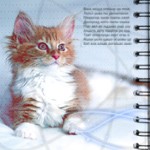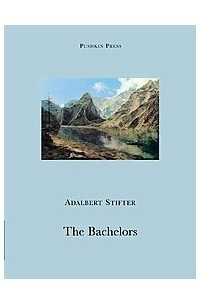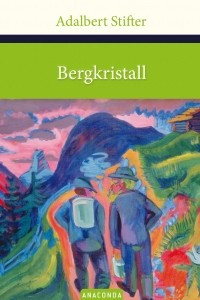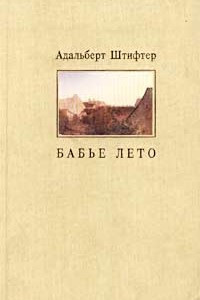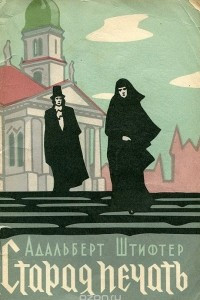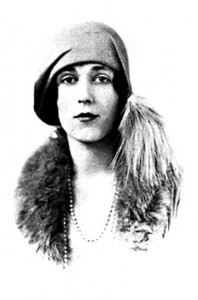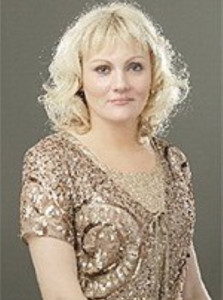-
Жанры
-
Художественная литература
- Приключения 75083
- Фантастика 100897
- Фэнтези 73474
- Детектив 59379
- Ужасы 48028
- Роман 70045
- Классическая литература 60314
- Историческая проза 8094
- Современная проза 141702
- Детская литература
- Культура и искусство
- Научная литература
- История
- Бизнес
- Прикладная литература
- Документальная литература
- Образование
- Дом и семья
- Физическая культура
- Здоровье
- Литература на иностранных языках
-
Художественная литература
- Книги
- Рецензии
- Сообщество
- Блоги
- Цитаты
- Тесты
- Подборки
- Премии
- Конкурсы
- Другое
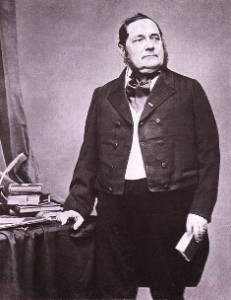
Адальберт Штифтер
Краткая биография автора
Адальберт Штифтер — австрийский писатель, поэт, художник и педагог.Штифтер родился 23 октября 1805 в Оберплане (Богемия). Учился в бенедиктинской гимназии в Кремсмюнстере (Верхняя Австрия). Окончил Венский университет (1830). Давал частные уроки, торговал живописью. В 1849-1866 служил инспектором народных школ Верхней Австрии. Дружил и переписывался с Грильпарцером, Ленау.Творчество Штифтера, принадлежавшее к эпохе бидермейера, высоко ценили Гофмансталь, Томас Манн, Петер Хандке. Его проза не ра...
Адальберт Штифтер — австрийский писатель, поэт, художник и педагог.Штифтер родился 23 октября 1805 в Оберплане (Богемия). Учился в бенедиктинской гимназии в Кремсмюнстере (Верхняя Австрия). Окончил Венский университет (1830). Давал частные уроки, торговал живописью. В 1849-1866 служил инспектором народных школ Верхней Австрии. Дружил и переписывался с Грильпарцером, Ленау.Творчество Штифтера, принадлежавшее к эпохе бидермейера, высоко ценили Гофмансталь, Томас Манн, Петер Хандке. Его проза не раз экранизировалась. В 2008 швейцарский режиссер Хайнер Геббельс показал в Авиньоне спектакль «Вещь Штифтера».Умер Штифтер 28 января 1868 в Линце. Будучи больным циррозом печени, в приступе депрессии перерезал себе горло бритвой.Born in Oberplan in Bohemia (now Horní Planá in the Czech Republic), he was the eldest son of Johann Stifter, a wealthy linen weaver, and his wife, Magdalena. Johann died in 1817 after being crushed by an overturned wagon. Stifter was educated at the Benedictine Gymnasium at Kremsmünster, and went to the University of Vienna in 1826 to study law. In 1828 he fell in love with Fanny Greipl, but after a relationship lasting five years, her parents forbade further correspondence, a loss from which he never recovered. In 1835 he became engaged to Amalia Mohaupt, and they married in 1837, but the marriage was not a happy one. Stifter and his wife, unable to conceive, tried adopting three of Amalia's nieces at different times. One of the children ran away, and another, Juliana, disappeared and was found drowned in the Danube four weeks later. Instead of becoming a state official, he became a tutor to the aristocrats of Vienna, and was highly regarded as such. His students included Princess Maria Anna von Schwarzenberg and Richard Metternich, son of Klemens Wenzel von Metternich. He also made some money from selling paintings, and published his first story, "Der Condor", in 1840. An immediate success, it inaugurated a steady writing career.Stifter visited Linz in 1848, and moved there permanently a year later, where he became editor of the Linzer Zeitung and the Wiener Bote. In 1850 he was appointed supervisor of elementary schools for Upper Austria.His physical and mental health began to decline in 1863, and he became seriously ill from cirrhosis of the liver in 1867. In deep depression, he slashed his neck with a razor on the night of 25 January 1868 and died two days later.Stifter's work is characterized by the pursuit of beauty; his characters strive to be moral, and move in gorgeous landscapes luxuriously described. Evil, cruelty, and suffering rarely appear on the surface of his writing, but Thomas Mann noted that "behind the quiet, inward exactitude of his descriptions of Nature in particular there is at work a predilection for the excessive, the elemental and the catastrophic, the pathological." Although considered by some to be one-dimensional compared to his more famous and realistic contemporaries, his visions of ideal worlds reflect his informal allegiance to the Biedermeier movement in literature. As Carl Schorske puts it, "To illustrate and propagate his concept of Bildung, compounded of Benedictine world piety, German humanism, and Biedermeier conventionality, Stifter gave to the world his novel Der Nachsommer".The majority of his works are long stories or short novels, many of which were published in multiple versions, sometimes radically changed. His major works are the long novels Der Nachsommer and Witiko.Stifter's Der Nachsommer (1857) and Gottfried Keller's Der Grüne Heinrich (Green Henry) were named the two great German novels of the 19th century by Friedrich Nietzsche. Der Nachsommer is considered one of the finest examples of the Bildungsroman, but received a mixed reception from critics at the time. Friedrich Hebbel offered the crown of Poland to whoever could finish it, and called Stifter a writer only interested in "beetles and buttercups."Witiko is a historical novel set in the 12th century, a strange work panned by many critics, but praised by Hermann Hesse and Thomas Mann. Dietrich Bonhoeffer found great comfort from his reading of Witiko while in Tegel Prison under Nazi arrest.In the German edition of his Reminiscences, Carl Schurz recalls his meeting with the daughter of the keeper of the Swiss inn he was staying at whose favorite book was Stifter's Studien. This incident occurred prior to 1852.He was named as an influence by W. G. Sebald, and both W. H. Auden and Marianne Moore admired his work, the latter co-translating Bergkristall as Rock Crystal with Elizabeth Mayer in 1945. Auden included Stifter in his poem "Academic Graffiti" as one of the celebrities, literary and otherwise, captured in a clerihew:Adalbert Stifter / Was no weight-lifter: / He would hire old lags / To carry his bags.Thomas Mann was also an admirer of Stifter, calling him "one of the most extraordinary, the most enigmatic, the most secretly daring and the most strangely gripping narrators in world literature."Rilke and Hugo von Hofmannsthal were deeply indebted to his art.
На нашем книжном сайте Вы можете скачать книги автора Адальберта Штифтера в самых разных форматах (epub, fb2, pdf, txt и многие другие). А так же читать книги онлайн и бесплатно на любом устройстве – iPad, iPhone, планшете под управлением Android, на любой специализированной читалке. Электронная библиотека КнигоГид предлагает литературу Адальберта Штифтера в жанрах .
Творчество Адальберта Штифтера
На нашем сайте представлены 8 книг автора Адальберта Штифтера. Самая популярная по мнению наших читателей "".
Victor leaves the home of his foster mother to take his first job in another town but stops on a remote island to visit his uncle who he has never met. Surrounded by an atmosphere of death and decay, Victor and his uncle symbolise opposite attitudes to life and their existential effects: stillness and movement, light and dark, openness and withdrawal. Ultimately, Victor, in balancing the differenc...
В ?сторичному роман? видатного австр?йського письменника Адальберта Шт?фтера (1805-1868) яскраво описан? под?ї Х?? стол?ття, ми стаємо св?дками становлення Чеської держави, бачимо її стосунки з сус?дн?ми Бавар?єю, Австр?єю, Польщею та Угорщиною, участь у поход? на М?лан. Але цей тв?р - водночас ще й зап?зн?лий куртуазний роман, осп?вування лицарських чеснот - чистого кохання. Образ головного героя...
Sein Freund, der Major, fuhrt ein zufriedenes Leben auf dem Land. Er arbeitet den ganzen Tag, er trifft Freunde und diskutiert uber Reformen. Aber es gibt keine Liebe in diesem Leben. Oder doch? Wer ist Brigitta, die Nachbarin, die dort frei auf ihrem Bauernhof lebt? In dieser Novelle fuhrt Adalbert Stifter einen neuen Frauentyp in die deutschsprachige Literatur ein: die ungebundene, beruflich ...
Auf dem Weg zuruck vom abgelegenen Alpendorf ihrer Gro?mutter geraten Konrad und Sanna am Weihnachtstag in ein dichtes Schneetreiben. Sie verlieren die Orientierung und suchen in einer Eishohle Zuflucht. Die Bewohner zweier miteinander verfeindeter Dorfer brechen zur Suche auf, um die Kinder zu retten und erfahren dabei die Kraft des Festes der Liebe. In seiner schonsten Erzahlung, erstmals erschi...
Роман классика австрийской литературы Адальберта Штифтера (1805–1868) «Бабье лето» не просто реалистическая история одной судьбы. Реальность здесь одухотворена мечтой автора о гармонических отношениях людей друг с другом и с природой, о первостепенном значении для человека искусств и наук. В наши дни эта книга читается с особым интересом, который создается контрастом между нестабильностью, раз...
Предлагаемые читателю новеллы принадлежат перу замечательного австрийского писателя XIX века А. Штифтера, чья проза отличается поэтическим восприятием мира, проникновением в тайны человеческой души, музыкой слова. А. Штифтер с его поэтической прозой, где человек выступает во всем своем духовном богатстве и в неразрывной связи с природой, - признанный классик мировой литературы.
В этой новелле Штифтер, как и всегда, остается верен себе. Начало почти каждой главы посвящается описанию природы; с явлениями природы сопоставляются различные повороты в судьбах героев и всей страны. В "Старой печати" немало и философских раздумий над жизнью человека и ее значением. Глубокий смысл вложен в самое название новеллы. Вместе со всеми богатствами отца Гуго унаследовал печать, на которо...
Похожие авторы

Если у Вас возникли вопросы по работе сайта - напишите нам!
нашли ошибку на странице!

Нейросеть ориентируется на оценки прочитанных вами книг
поиск

Найдите книгу, автора, подборку, издательство, жанр, настроение или друга на Книгогид
подборки

Создавайте подборки с книгами, которые вы прочитали, подписывайтесь на подборки интересных пользователей.
Регистрируясь, вы соглашаетесь с нашими Условиями и политикой конфиденциальности
Книгогид использует cookie-файлы для того, чтобы сделать вашу работу с сайтом ещё более комфортной. Если Вы продолжаете пользоваться нашим сайтом, вы соглашаетесь на применение файлов cookie.





